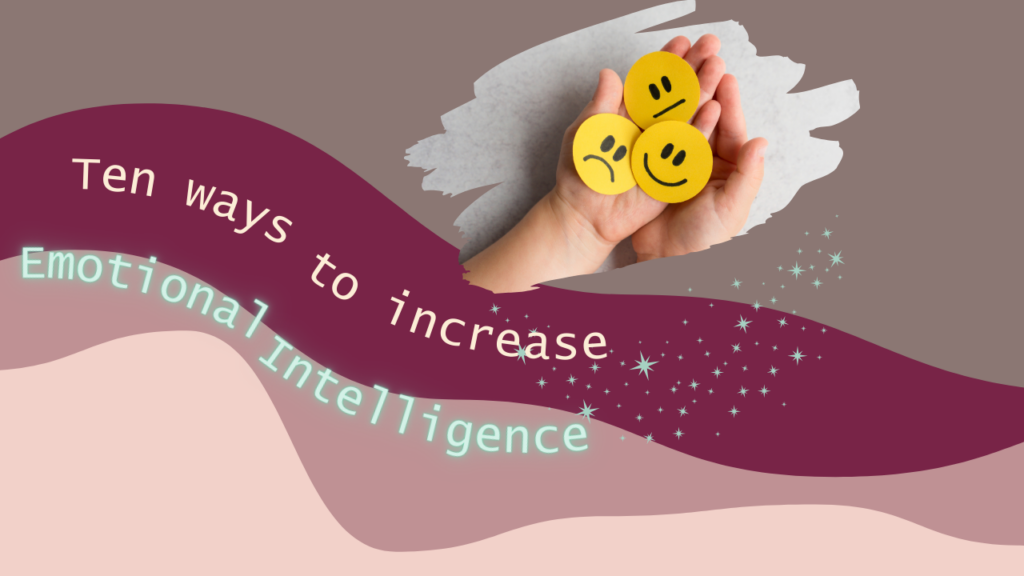Empowering children with emotional intelligence is a fundamental step towards building their future success. By guiding them to recognize and regulate their emotions, we provide them with the essential skills to navigate life’s challenges. Furthermore, cultivating empathy in children not only fosters positive relationships but also instills a sense of compassion towards others, inspiring them to make a positive impact on the world.
Here are ten effective ways to teach kids emotional intelligence:
1. Lead by example: Children learn best by observing their parents or guardians. Displaying healthy emotional expression and regulation sets a strong foundation for them to follow suit. By modeling healthy emotional expression and regulation, we create a nurturing environment for children to learn from. Setting a positive example means showing them effective ways to express themselves without resorting to harmful behaviors such as aggression or suppressing their emotions. Openly discussing our feelings and using appropriate language helps children learn effective communication skills. It also teaches them the importance of self-regulation through healthy emotional expression. By observing our calm and composed reaction to stressors, they learn essential life skills like patience, resilience, and problem-solving. These skills will serve them well in various situations throughout their lives.
2. Encourage open communication: Create a safe space where kids feel comfortable expressing their emotions without judgment or criticism. Open communication is essential for fostering healthy emotional development in children. One way to achieve open communication is by actively listening to your child. Show genuine interest in what they have to say and provide them with your undivided attention. This will make them feel valued and heard, increasing their confidence in opening up. Another effective strategy is to validate your child’s emotions. Let them know it’s okay to feel whatever they are feeling, whether happiness, sadness, anger, or frustration. Assure them that you understand and accept their emotions without judgment or criticism.
3. Teach emotion recognition: Help children identify emotions in themselves and others using visual aids or storytelling techniques. By using visual aids or storytelling techniques, you can make this learning experience engaging and memorable. Here’s how you can go about it:1. Start with basic emotions: Introduce children to a few core emotions such as happiness, sadness, anger, fear, and surprise. Use visual aids like pictures or flashcards displaying facial expressions that reflect these emotions. 2. Discuss body language cues: Teach children that apart from facial expressions, body language can also indicate different emotions. For example, folded arms may suggest defensiveness or discomfort, while a wide smile may convey joy. 3. Engage in storytelling: Storytelling is an effective tool for teaching emotional recognition. Choose stories with relatable characters experiencing various emotions throughout the narrative. Encourage children to identify and discuss the emotions they observe in the characters’ actions and expressions. 4. Role-playing activities: Organize activities where children get into pairs or groups to act out different scenarios involving specific emotions. This hands-on approach allows them to practice recognizing and expressing different feelings firsthand. 5. Emotion charades or Pictionary: Play games like emotion charades or Pictionary where kids take turns acting out or drawing different feelings while others guess what emotion is being represented. This interactive exercise helps develop their observation skills while making learning fun. When teaching children about emotions, it’s crucial to emphasize empathy, self-reflection, and positive communication. To encourage empathy, engage children in role-playing activities or story discussions and have them imagine how others might feel based on facial expressions and body language cues. For self-reflection, provide journaling prompts like “How do I feel today?” or “What made me happy/sad/angry today?” and encourage them to express themselves through drawings or writing. When discussing emotions, reinforce the importance of active listening and respectful communication, ensuring that everyone’s feelings are valid and should be acknowledged without judgment. It’s essential to tailor these activities to the children’s developmental stage, using visual aids, storytelling, and interactive exercises to ensure their effectiveness.
4. Practice emotion regulation: It is beneficial to teach emotion regulation strategies to help individuals manage their emotions effectively. One of the most effective ways to regulate emotions is to use techniques such as deep breathing exercises, counting to ten, or taking a break when feeling overwhelmed or upset. Deep breathing exercises can help to calm the mind and reduce stress levels while counting to ten can provide a moment of pause to think before reacting impulsively. Taking a break, however, allows individuals to step away from a stressful situation and regroup their thoughts, leading to a more positive and proactive response.
5. Foster empathy: Developing empathy in children is a crucial aspect of their emotional and social growth. One way to foster empathy is by encouraging children to understand and share the feelings of others. This can be achieved by discussing different perspectives and encouraging them to put themselves in someone else’s shoes. Engaging in acts of kindness is also an effective way to develop empathy. Encourage children to perform small acts of kindness towards others, such as sharing toys or helping with chores. These actions will help children develop a sense of compassion and empathy towards others, which will benefit them throughout their lives.
6. Promote problem-solving skills: Teach kids to find constructive solutions when faced with conflicts or challenges that trigger strong emotions. One effective way to help children develop their problem-solving skills is by teaching them how to find constructive solutions when faced with conflicts or challenges that trigger strong emotions. This can involve teaching them to identify the root cause of the problem, brainstorming potential solutions, evaluating the pros and cons of each option, and selecting the best course of action. Additionally, it can be helpful to encourage children to reflect on the outcomes of their decisions and learn from any mistakes or successes along the way. By promoting problem-solving skills in children, we can help them become more confident, independent, and successful individuals in their personal and professional lives.
7. Use literature and media: One effective way to improve children’s emotional intelligence is by using literature and media as tools for discussion. By selecting age-appropriate books, movies, or TV shows that explore emotional themes, parents and educators can engage children in conversations that help them understand and identify their own emotions, as well as those of others. This approach not only expands children’s vocabulary for emotions but also provides examples of how emotions manifest in different situations and how they can be expressed in healthy ways. Additionally, discussing emotional themes in literature and media can help children develop empathy and learn how to relate to others more compassionately.
8. Encourage self-reflection: Help children reflect on their emotions by asking questions like “How did that make you feel?” or “What could you do differently next time?”
9. Provide opportunities for social interactions: Encouraging children to participate in group activities can be a great way to foster their social skills. By engaging in activities that require cooperation, children can learn to work together towards a common goal. Participating in group activities that involve compromise can also help children understand the importance of considering other people’s needs and interests. Moreover, engaging in activities that require conflict-resolution skills can help children learn how to calmly and respectfully resolve disagreements with others.
10. Start early but adapt accordingly: Teaching emotional intelligence should ideally start early, as it helps children develop essential skills such as empathy, self-awareness, problem-solving, and communication. However, it is crucial to remember that each child is unique and may require a different approach to learning emotional intelligence. Therefore, it is vital to tailor the lessons according to their developmental stage and individual needs. For instance, younger children may benefit from more basic concepts, such as recognizing emotions, while older children may be ready for more complex lessons, such as conflict resolution and empathy building. Ultimately, the key is to create a supportive and nurturing environment that encourages children to develop emotional intelligence at their own pace.
By implementing these strategies consistently, we can empower our children with the invaluable gift of emotional intelligence, setting them on a path toward emotional well-being and success.

